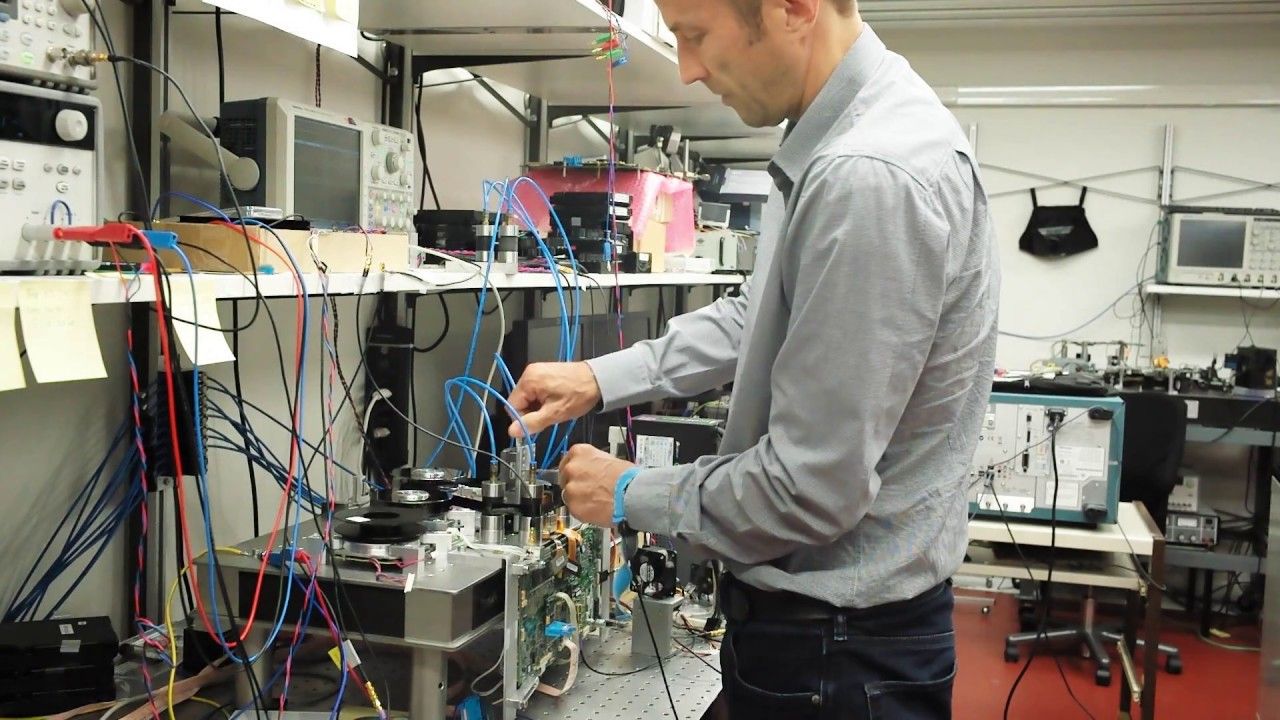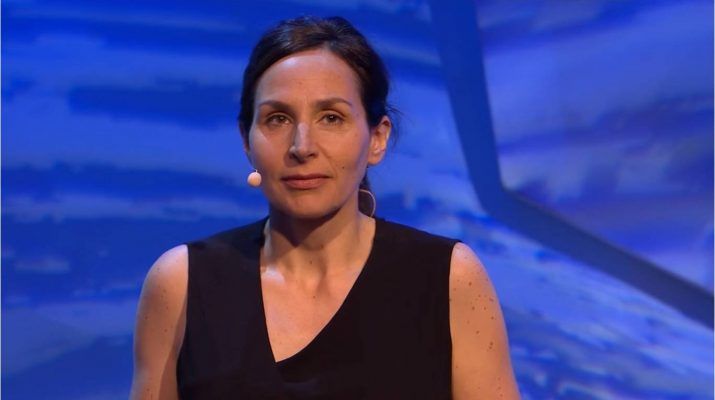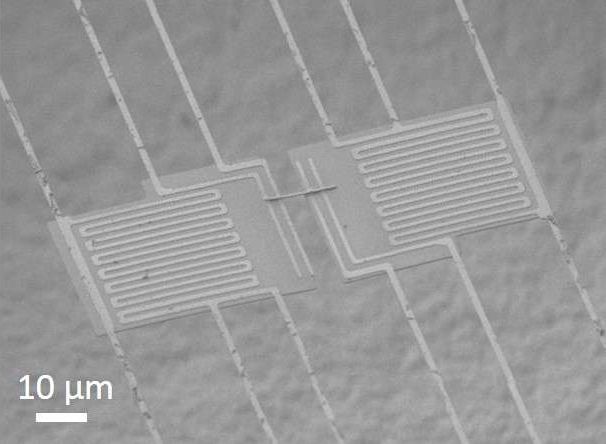Page 10240
Aug 2, 2017
IBM scientists have captured 330TB of uncompressed data into a tiny cartridge
Posted by Shailesh Prasad in categories: computing, health

In a new world record, scientists at IBM have captured 330 terabytes of uncompressed data, or the equivalent of 330 million books, into a cartridge that can fit into the palm of your hand. The record of 201 gigabits per square inch on prototype sputtered magnetic tape is more than 20 times the areal density currently used in commercial tape drives. Areal recording density is the amount of information that can be stored on a given area of surface.
Tape drives were invented over 60 years ago and were traditionally used for archiving tax documents and health care records. IBM’s first tape unit used reels of half-inch-wide tape that could only hold about 2 megabytes.
Continue reading “IBM scientists have captured 330TB of uncompressed data into a tiny cartridge” »
Aug 2, 2017
Pay attention to the trends in exponential technologies, particularly to “the big three,” says Jason Silva
Posted by Shailesh Prasad in categories: genetics, nanotechnology, robotics/AI

Pay attention to the trends in exponential technologies. particularly to “the big three,” says Jason Silva. Those 3 are GNR: Genetics, Nanotechnology, and Robotics.
Aug 2, 2017
Scientists discover unique thermoelectric properties in cesium tin iodide
Posted by Shailesh Prasad in categories: nanotechnology, solar power, sustainability
A newly discovered collective rattling effect in a type of crystalline semiconductor blocks most heat transfer while preserving high electrical conductivity — a rare pairing that scientists say could reduce heat buildup in electronic devices and turbine engines, among other possible applications.
A team led by scientists at the Department of Energy’s Lawrence Berkeley National Laboratory (Berkeley Lab) discovered these exotic traits in a class of materials known as halide perovskites, which are also considered promising candidates for next-generation solar panels, nanoscale lasers, electronic cooling, and electronic displays.
These interrelated thermal and electrical (or “thermoelectric”) properties were found in nanoscale wires of cesium tin iodide (CsSnI3). The material was observed to have one of the lowest levels of heat conductivity among materials with a continuous crystalline structure.
Continue reading “Scientists discover unique thermoelectric properties in cesium tin iodide” »
Aug 2, 2017
Automated valet parking is coming sooner than you think
Posted by Shailesh Prasad in categories: robotics/AI, transportation
Aug 2, 2017
Can we, as adults, grow new neurons? YES: Sandrine Thuret
Posted by Müslüm Yildiz in categories: biotech/medical, life extension, robotics/AI

Can we, as adults, grow new neurons? Neuroscientist Sandrine Thuret with a background in food science, molecular, cellular, behavioural and ageing biology says that we can, and she offers research and practical advice on how we can help our brains better perform neurogenesis—improving mood, increasing memory formation and preventing the decline associated with aging along the way.
“Can we, as adults, grow new nerve cells? There’s still some confusion about that question, as this is a fairly new field of research. For example, I was talking to one of my colleagues, Robert, who is an oncologist, and he was telling me, “Sandrine, this is puzzling. Some of my patients that have been told they are cured of their cancer still develop symptoms of depression.” And I responded to him, “Well, from my point of view that makes sense. The drug you give to your patients that stops the cancer cells multiplying also stops the newborn neurons being generated in their brain.” And then Robert looked at me like I was crazy and said, “But Sandrine, these are adult patients — adults do not grow new nerve cells.” And much to his surprise, I said, “Well actually, we do.” And this is a phenomenon that we call neurogenesis.”
Continue reading “Can we, as adults, grow new neurons? YES: Sandrine Thuret” »
Aug 2, 2017
Pharma-controlled Journal of the American Medical Association waging full-scale attack on Vitamin D in effort to push flu shots for toddlers
Posted by John Gallagher in categories: biotech/medical, health
(Natural News) A recent headline in the U.K.’s Daily Mail boldly declares, “Vitamin D will NOT protect your child from a cold: Myth-busting study says ‘more isn’t always better’ to help toddlers stay healthy.” This disingenuous headline infers that vitamin D has no protective effect against colds and flu. In fact, the study it goes on to cite, published in the Journal of the American Medical Association (JAMA), only compared the effects of two different dosages of vitamin D administered to children. It did not compare the health of children who were not given vitamin D supplements at all, to those who were.
For some time now, researchers have understood that there is a link between a lack of sunshine, as experienced in most northern hemisphere countries in winter time, and the increased prevalence of viral infections, particularly upper respiratory tract infections, or the common cold. The production of the hormone vitamin D is directly linked to exposure to direct sunlight.
Researchers at St. Michael’s Hospital in Toronto, Canada, decided to investigate whether giving children doses higher than the daily recommended amount of vitamin D would reduce their risk of getting sick. Their study included 700 healthy children between the ages of 1 and 5. Half the children were given the standard recommended dose of 400IU of vitamin D daily during winter, while the other half were given a higher dose of 2000IU each day. There was no statistically significant difference in the number of colds and flus reported by the children’s parents for the duration of the study – all the kids in both groups had an average of about 1.9 colds each.
Aug 2, 2017
Expert warns ‘cancer moonshot’ could open the door to DNA bioweapons
Posted by John Gallagher in categories: biotech/medical, innovation

Scientists around the world have long been searching for a cure for cancer, and recent advancements in technology coupled with rigorous new efforts such as Joe Biden’s ‘cancer moonshot’ have ignited hopes that it could soon become a reality.
But, experts warn that such a breakthrough, despite its obvious benefits, could have unexpected global consequences.
Continue reading “Expert warns ‘cancer moonshot’ could open the door to DNA bioweapons” »
Aug 2, 2017
Hyperloop tests its ‘passenger pod’ in historic 310mph run
Posted by John Gallagher in category: transportation

The July 29, 2017, tests hit record test speeds traveling nearly the full distance of the 500-meter DevLoop track in the Nevada desert.
‘This is the beginning, and the dawn of a new era of transportation,’ said Shervin Pishevar, Executive Chairman and Co-founder of Hyperloop One.
Continue reading “Hyperloop tests its ‘passenger pod’ in historic 310mph run” »
Aug 2, 2017
BCH: Did I throw away $$$$? Perhaps…
Posted by Philip Raymond in categories: bitcoin, cryptocurrencies, economics, internet
Yesterday was D-Day in the Bitcoin world: On Tuesday, Aug 1st 2017, Bitcoin Cash (BCH) forked off of Bitcoin (BTC). For anyone with control over their wallet and private keys, they now have an equal amount of BTC and BCH.
I have a Bitcoin wallet. Yet, I don’t have any new Bitcoin Cash—and I have no one to blame but myself. Will I ever get the BCH associated with my pre-fork coins?  I think that it is likely, though certainly not assured. If not, it will still be my fault. After all, I had fair warning from the company that I trust as custodian of my assets.
I think that it is likely, though certainly not assured. If not, it will still be my fault. After all, I had fair warning from the company that I trust as custodian of my assets.
A Cryptocurrency Mantra:
“Woe be the person who trusts decentralized cash to a custodian”
I trust Coinbase for good reason. I left my BTC in my Coinbase wallet and vault throughout the fork. Let me tell you how I view the risks of failing to remove my coins before August 1…
Tags: BCH, BCH withdrawal, bitcoin, Bitcoin Cash, BTC, Coinbase, fork, Segwit2












